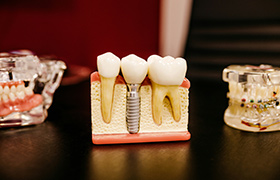Tooth extraction; a guide from our dentist
Do you need a tooth extracted?
Don’t worry! Gone are the days of tying a string around your tooth and slamming a door!
There are many reasons why you may need to have a tooth extracted and when you come to our team, irrespective of those reasons, we will always endeavour to ensure that your visit is comfortable.
At Walkerston Dental, our dentist Walkerston will always aim to preserve teeth when possible and, should you need an extraction or other oral surgery, we will be sure to answer any queries you may have. Great!
But did you know that there are different extraction types? And were you aware that they may be able to be paired with restorative procedures like dental implants? Our dentist Walkerston explains below.
Why may an extraction be needed?
Many people assume that if someone needs to have a tooth removed it is due to decay or the tooth is too badly broken to be restored. And while this may be the case for many people, there are other reasons why our dentist Walkerston may need to extract a tooth.
Firstly, the most common reason for extraction is decay; the tooth has broken down, is causing pain and cannot be repaired with a crown or filling.
But teeth may also need to be removed if the person has overcrowded teeth and is preparing for a brace or aligner. You may also need an extraction if the tooth is impacted (common with wisdom teeth) or if the tooth has broken and cannot be repaired.
Types of extraction
There are 2 types of extraction that we use to extract teeth; simple and surgical.
A simple extraction is just that; the area is numbed and the tooth is removed. This type presupposes that the tooth is not too badly damaged or decayed to be removed and needs most or all of the crown of the tooth to be visible and for the roots to be healthy. You will likely have a simple extraction if the tooth is being removed for orthodontic work.
A surgical extraction is more common in cases of bad decay or severely broken teeth, where the crown has disintegrated or vanished. The area is numbed and incisions are made into the gum, where our dental team will then remove the tooth. Surgical extractions are also common with the removal of many different types of wisdom teeth.
Aftercare
Most extraction sites will be sewn together by our team, so there is no open wound and the chance of dry socket is reduced. You should clean it with saltwater. Take pain relief as and when needed and of course, keep an eye out for signs of infection. If you feel unwell, are sick, or have a fever, then please see our team promptly as you may have an infection.
You should refrain from applying pressure to the area too.
Dry socket
Dry socket occurs when an extraction site is left open and a necessary blood clot fails to form. This is uncomfortable at best and should be brought to the attention of our team promptly!
DISCLAIMER
All treatment carries risks. Individual consultation is required with one of our practitioners to ensure that the treatment is right for you.





